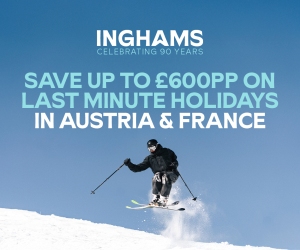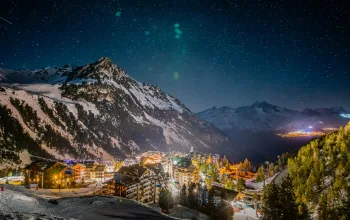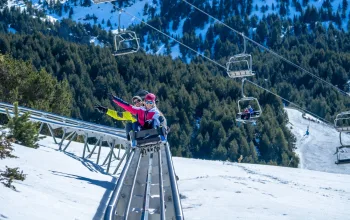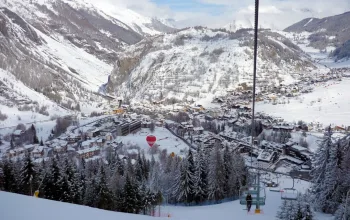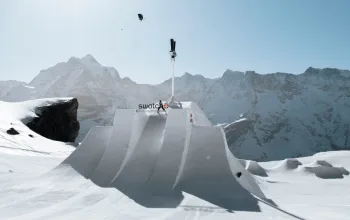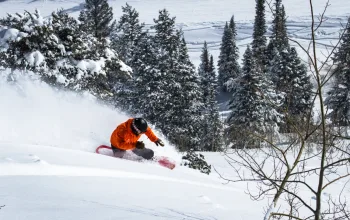It was ten years ago, at the top of a steep red run, in Niseko, Japan, that I noticed him, standing a few metres away from us. He looked like any other skier, but as he took his goggles off I could see he was blind. I did a double take – I had no idea that blind people would even attempt to ski.
He stood there calmly and patiently, awaiting instruction from a sighted guide standing about three metres in front of him. “Ja, ikimasho!” (OK, let’s go!), the guide called back, and with that the blind skier sped off to tackle a red run that would drop hundreds of vertical metres, with no visual reference. I was left stunned and humbled by the inner courage that he must possess.
What might blind skiing feel like, I wondered. It seemed like the ultimate act of putting faith in your other senses – hearing, feeling and proprioception – and I wanted to try it. Perhaps, by shutting out vision and relying solely on your other senses you could even become a better skier.
Going blind
Ten years later, having decided to try having a blindfolded lesson myself, I am sitting on a chairlift with a blind-fold on. It’s an eye-mask in fact, the kind you might wear on a long distance flight, but it is certainly doing the job. We are ascending in bright sunshine in the resort of St Francois Longchamps. The view across the mountains In front of me, bathed in late morning sunshine, is magnificent, one of the best panoramas in the Alps – but all I have before me is darkness.
“This will help improve your boarding ability overall,” my instructor Christian, who has been teaching blind skiers for 17 years, reassures me. “You’ll be more concentrated, more responsive to the piste, using the edge of the board properly.”
As we approach the point where the chairlift will spit us out, I can hear the machinery get louder. Chairlifts weren’t really designed with snowboarders in mind, and certainly not visually impaired ones. I don’t like the idea of ending up in a tangled heap at the top of this, but my blind-snowboarding instructor, Christian guides my wobbly exit off the lift.
At the top, I feel totally helpless. “Relax,” says Christian, facing me. “You are on a blue slope. I’m holding you, so you are not going anywhere without me.” Like a nervous ballroom dancer, I grip him back more much tightly, and we begin a gentle decent. “Front side turn”, Christian calls, and I dip my toes to dig the snowboard edge into the piste. “That’s it…now back side.”
Christian’s guidance is welcome indeed, because my sense of where the slope is in front of me is gone. Which direction is up, or down – I’ve no idea; there seem to be no clues. Even the gradient beneath my board is a mystery at first – I can’t feel the difference in steepness on different sections of the slope. The only way of telling is how fast I seem to be dropping when I slide – but I can’t verify whether my judgement is correct. The concentration on what’s happening to my feet and board is fierce. It’s as if, in terms of feeling, almost nothing exists above my waist.
Hearing aided
After about 15 minutes, I notice something change, as if a switch has been flicked. My hearing has suddenly become what I can only describe as ‘spacial 3D’. I can now place the sounds of other skiers, of conversations, of the chairlift in a three-dimensional map in my mind, hearing how close or far something is. This is a new experience.
Having relied at first on Christian’s outstretched arms to compensate for my clumsy, wild swings of imbalance, I’m now learning to trust feedback from the piste itself and rather than gripping him tightly, I’m now only touching him lightly as a point of reference.
Well that was a mistake! “You are doing well. Now it’s time to do it by yourself,” Christian says, letting go of me. “You’ll follow me only by sound.” I hear Christian’s skis edge down the piste as I stand balanced, waiting. Christian clacks his ski poles together so I know which direction he is, and I lean in and start sliding.
At first, it seems that all I do is fall. But then the first linked turn comes, and then another. I’m learning to trust my feet and my board – and not over-react. More linked turns, snaking towards Christian’s clacking skis and words of encouragement.
By the end of the afternoon, my record is eight linked turns – achieved on a red run. It takes me three minutes to very slowly open my eyes and adjust to the sunshine. After hours of blindness, the view could not be better. For the next two days in St Francois Longchamps, as we carve the pistes, I find that the balance of my attention has changed. I’m more aware of my feet on the board, and my board seems to take the arc of the curve more keenly and smoothly as it cuts a groove in the snow.
It’s all very well me, a sighted snowboarder, going ‘blind’ for a day, to try to experience what it is like. I have the luxury of restoring my sight whenever I want. But I think that experiencing, even for a few hours, what it is like to manage without vision, is a way of empathising with those who don’t have sight.
And at challenging moments, both on snow and off it, I think back to that blind skier up there on the mountain in Niseko, and ask myself. What would he do now?




